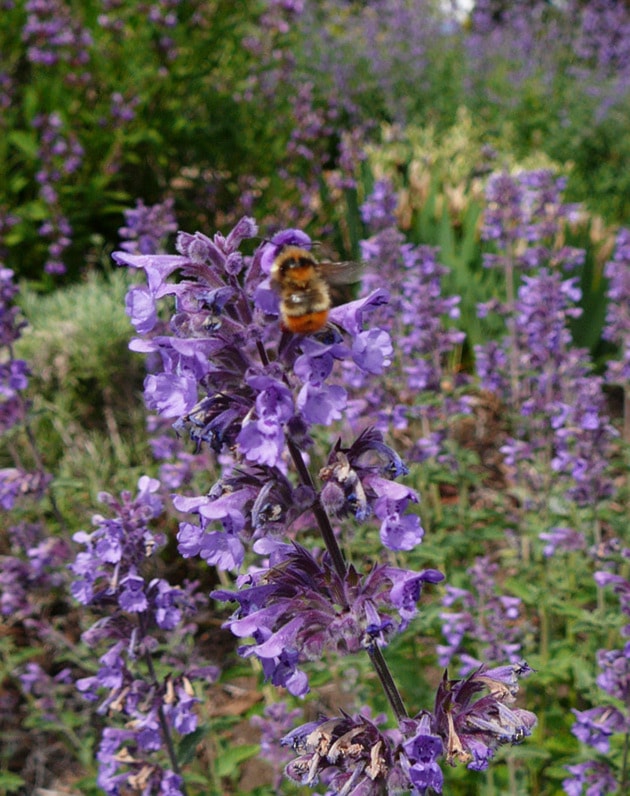Over the past decade, I have trialed many plants in a dry, sandy garden adjacent to a big, old weeping willow which I don’t water.
I began by planting old favourites from my former nursery demonstration gardens. These thrived with no water in amended Glenmore clay.
I was very disappointed to discover how many of these plants needed extra water in the sandy garden.
The garden bed is on the roadside corner making it very hard to use a sprinkler without watering pavement.
After numerous plant failures, I changed tactics (stopped being a plantaholic) and began to grow more of the species that thrived.
The garden has a predominance of silver/gray foliage, an adaptation many drought tolerant species share.
I grow several varieties of lavender.
My favourite is the very large Lavender intermedia ‘Grosso’. It has long, bright silver needle-like leaves. Plants grow to three feet wide and up to four feet tall, including the long flower spikes.
This plant looks outstanding year round.
To keep lavender plants compact, I use long-bladed shears, cutting off some foliage when I remove the finished flower stems. This encourages new growth along the lower branches.
I grow three well-behaved Artemesia for interestingly-textured silver foliage: ‘Valerie Finnis’, Artemesia versicolour ‘Seafoam’ (Curlicue Sage) and Artemesia ‘Silver Mound’.
Artemesia ‘Silver King’, a rampant spreader, has been banished to a dry, erosion control site.
Other silver-foliaged plants I have include Santolina (Lavender Cotton) which keeps its foliage in winter, the native Ericameria nauseosa (Rabbitbrush), Russian sage and Nepeta ‘Walker’s Low’ (catmint).
Culinary herbs that do well are thyme, tarragon, and sage (Salvia officinalis).
I have colourful foliage varieties of the sage—green with yellow, grey with pink and white, and grey/purple. Variegated foliage adds interest to the garden all season. The blue flower spikes last about two weeks in June.
It’s important to cut out stems on variegated plants that have reverted to the solid colour as this is dominant.
Other successful herbs, not used for eating, are Hyssopus officinalis and Ruta graveolens (rue).
Early bloomers include miniature and dwarf German iris and Geranium sanguineum (bloody cranesbill).
Koeleria glauca (blue hair grass) is a short, blue-leafed, clump-forming grass that blooms in June and self-seeds randomly if I don’t dead-head it. It’s similar to blue fescue but performs better.
I resorted to planting Cerastium tomentosum (snow-in-summer) in the most challenging area. It’s a vigorous spreader, quickly covering a dry mound.
To keep it in check, I shear off the flowers before they set seed and reduce the plant size by digging out a section all around the edges.
The corner I enjoy the most includes a variety of sempervivums (hens and chicks) Sedum album, Sedum ‘Angelina’, Scutellaria alpina (alpine skullcap) and Yucca ‘Golden Sword’ along with interesting rocks from my mother’s rock garden.
To find out more about the plants and see photos, go to and search on the plant database.
Gwen Steele is executive director of the non-profit Okanagan Xeriscape Association.



